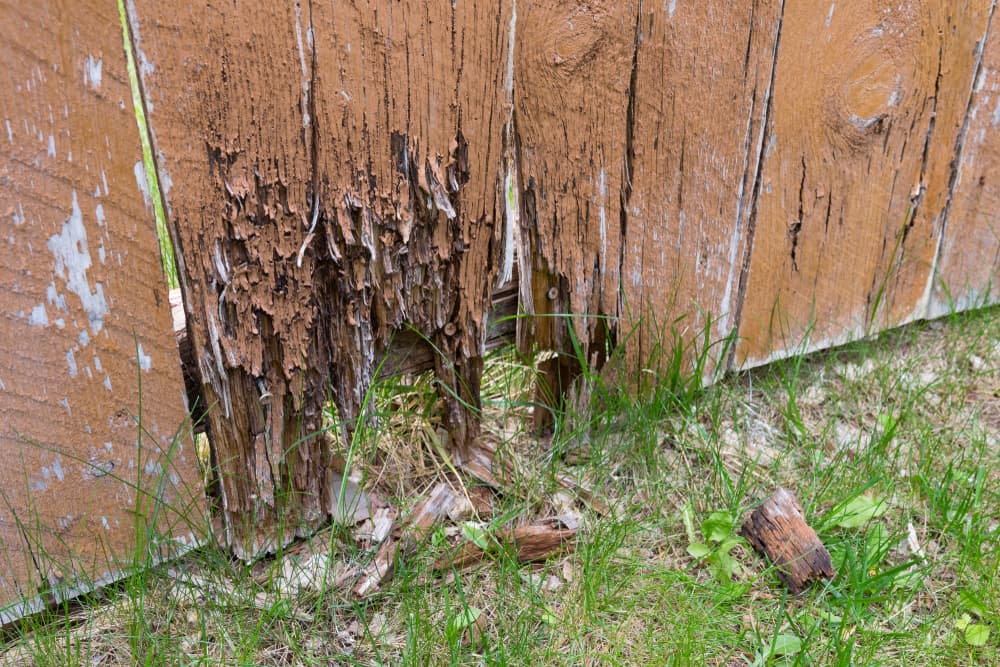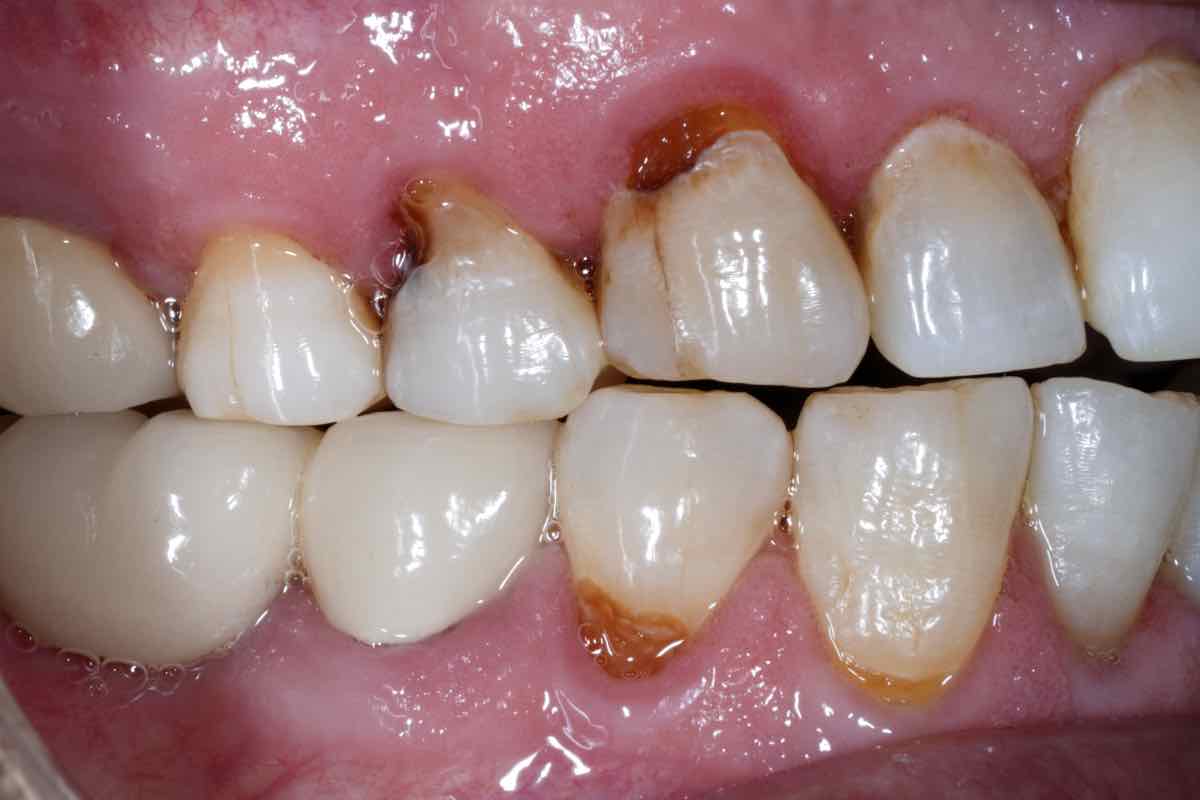Rotting wood emits a distinct and unpleasant odor that is often described as musty, earthy, or damp. This smell is caused by the decomposition process of the wood, where fungi and bacteria break down the organic matter. The odor can vary depending on the type and stage of decay, but it is generally pungent and can be detected even from a distance. It’s important to identify and address rotting wood promptly as it may indicate structural damage or potential health hazards.

Unraveling the mysteries of the musty scent: Rotting wood and its smell
Have you ever walked into an old building or opened a forgotten drawer, only to be greeted by a distinctive, unpleasant smell? That musty odor often comes from rotting wood. Rotting wood is a common sight in many environments, from old houses and furniture to outdoor structures. This article will delve into the mysteries of the musty scent associated with rotting wood and explore why it smells the way it does.

The process of wood decay
Before we understand why rotting wood smells the way it does, let’s first explore the process of wood decay. Wood is a natural, organic material that can break down over time when it comes into contact with moisture, oxygen, and certain types of fungi or bacteria. The decay process involves a series of chemical reactions that gradually degrade the wood’s structure.
As the wood decomposes, it releases various compounds, including gases and volatile organic compounds (VOCs). These compounds are responsible for the distinct aroma associated with rotting wood.
The musty smell of rotting wood
Now, let’s uncover the secrets behind the musty scent of rotting wood. The primary cause of the odor is the release of volatile organic compounds (VOCs) during the decay process. These VOCs are produced by the microorganisms breaking down the wood fibers. The specific types and concentrations of VOCs can vary depending on the type of wood, the microorganisms involved, and the environmental conditions.
The most common VOC present in the musty smell of rotting wood is called geosmin. Geosmin is a naturally occurring organic compound that is produced by certain bacteria and fungi. It has a distinctive earthy, musty odor that is often associated with the smell of freshly turned soil or decaying organic matter.
In addition to geosmin, rotting wood can release other VOCs such as terpenes, alcohols, and aldehydes. These compounds contribute to the complex aroma of the musty scent. Each type of wood and microorganism combination can result in a unique blend of VOCs, giving rise to different smells associated with rotting wood.
Health implications of the musty scent
While the musty smell of rotting wood may be unpleasant, it can also have health implications. The presence of rotting wood in indoor environments can contribute to poor indoor air quality, leading to respiratory issues and allergies. The release of VOCs from rotting wood can irritate the respiratory system, especially in individuals with sensitivities or pre-existing respiratory conditions.
Furthermore, certain types of fungi that thrive on rotting wood can produce mycotoxins, which are toxic substances that can cause a range of health problems when inhaled or ingested. It is important to address any issues of rotting wood in indoor spaces to maintain a healthy living environment.
Preventing and treating rotting wood
Prevention is always better than cure when it comes to rotting wood. Here are some tips to help prevent and treat rotting wood:
- Ensure proper ventilation and moisture control in indoor spaces to prevent excess moisture buildup.
- Regularly inspect and maintain wooden structures, such as roofs, windows, and decks, to identify and address any signs of rotting wood.
- Remove and replace any severely decayed wood to prevent further damage and spread of decay.
- Apply protective coatings, such as paint or varnish, to wooden surfaces to provide a barrier against moisture.
By taking these preventative measures and addressing any signs of rotting wood promptly, you can help preserve the integrity of wooden structures and prevent the development of musty odors.
In summary, the musty scent associated with rotting wood stems from the release of volatile organic compounds (VOCs) during the decay process. These VOCs, including geosmin and other compounds, contribute to the distinct aroma of rotting wood. While the smell may be unpleasant, it is important to address any issues of rotting wood to maintain a healthy living environment. By understanding the process of wood decay and taking appropriate preventive measures, we can unravel the mysteries behind the musty scent and ensure the longevity of wooden structures.

A nose for decay: Understanding the smell of decomposing wood
Wood is a versatile and durable material that has been used for centuries in various applications, from building structures to crafting furniture. However, like all organic materials, wood is susceptible to decay over time. One of the telltale signs of wood decay is its distinctive smell, which can help us understand the extent of deterioration and take appropriate measures to address it.
The chemistry behind the smell
When wood begins to decompose, it undergoes a complex process involving the breakdown of its organic compounds. As the wood fibers break down, various volatile organic compounds (VOCs) are released into the air, giving rise to the characteristic smell of decay.
The primary compound responsible for the smell of decomposing wood is known as geosmin. Geosmin is a naturally occurring organic compound produced by certain microorganisms, such as fungi and bacteria, during the decomposition process. It has a distinct earthy odor that is often described as musty or damp.
In addition to geosmin, other VOCs such as aldehydes, ketones, and alcohols are also produced during wood decay. These compounds contribute to the overall odor profile and can vary depending on the type of wood, the stage of decay, and the environmental conditions.
Identifying the smell
The smell of decomposing wood can be quite distinct and easily recognizable, especially to those familiar with it. It is often described as a combination of earthiness, mustiness, and dampness. The intensity of the odor can vary depending on several factors, including the extent of decay, the type of wood, and the environmental conditions.
One way to identify the smell of decomposing wood is to compare it to other familiar odors. For example, many people liken the smell to that of a damp basement, wet leaves, or a forest floor after rainfall. By associating the smell with something familiar, it becomes easier to recognize and differentiate it from other odors.
Importance in detecting wood decay
The smell of decomposing wood plays a crucial role in detecting and assessing the extent of wood decay. By detecting the characteristic odor, homeowners, builders, and craftsmen can identify areas of concern and take appropriate measures to address the issue.
For example, in the case of a wooden structure, such as a house or a deck, the presence of a strong, persistent smell of decay may indicate hidden rot or fungal infestation. Prompt action can then be taken to investigate the source of the odor, remove the decayed wood, and implement necessary repairs or treatments to prevent further damage.
Similarly, in the case of antique furniture or wooden artifacts, the smell of decay can indicate the presence of wood-boring insects or fungal decay. By identifying and addressing the issue early on, it is possible to preserve and protect these valuable pieces from further deterioration.
Furthermore, the smell of decomposing wood can also serve as a warning sign for potential health hazards. Some VOCs released during wood decay can be harmful when inhaled in significant quantities. Therefore, it is essential to take proper precautions, such as wearing protective gear, when working with or near decomposing wood.
In summary, the smell of decomposing wood is a significant indicator of wood decay. Understanding the chemistry behind the smell and being able to identify it can help us detect and address decay in various applications, from structural wood to antique furniture. By paying attention to this olfactory cue, we can take timely action to preserve and protect our wooden possessions and ensure the safety of our living environments.

The science behind the scent: Delving into the chemistry of rotting wood’s aroma
When you stumble upon a decaying log in the forest, you may notice a distinct and pungent smell. This odor is the result of complex chemical reactions happening within the wood. In this section, we will explore the fascinating science behind the scent of rotting wood and understand the chemistry behind its aroma.
Wood is primarily composed of cellulose, hemicellulose, and lignin. When these organic compounds start to break down due to microbial activity, they release various volatile organic compounds (VOCs) into the air, which are responsible for the characteristic smell.
The primary VOCs produced during the decomposition of wood are aldehydes, ketones, acids, and phenols. These compounds contribute to the unique aroma that we associate with rotting wood.
Aldehydes:
Aldehydes are organic compounds that contain a carbonyl group bonded to at least one hydrogen atom and a carbon atom. They are formed during the breakdown of cellulose and hemicellulose in wood. One of the most prominent aldehydes found in the aroma of rotting wood is acetaldehyde. It has a fruity and sweet aroma.
Ketones:
Ketones are organic compounds characterized by a carbonyl group bonded to two carbon atoms. They are produced through the degradation of cellulose and hemicellulose. One of the ketones commonly found in the scent of rotting wood is acetone, which has a fruity and slightly sweet smell.
Acids:
Acids are compounds that release hydrogen ions when dissolved in water. They are formed during the decomposition of lignin in wood. One of the main acids responsible for the odor of rotting wood is acetic acid, which has a vinegar-like smell.
Phenols:
Phenols are aromatic compounds that contain a hydroxyl group (-OH) attached to a benzene ring. They are produced during the breakdown of lignin, and some of them contribute to the distinctive scent of rotting wood. One example of a phenol commonly found in the aroma of decaying wood is guaiacol, which has a smoky and medicinal aroma.
Additionally, other compounds like terpenes and sulfur-containing compounds can also contribute to the overall aroma of rotting wood. Terpenes are hydrocarbons found in many plant species and can add a woody or resinous scent to the mix. Sulfur-containing compounds, such as hydrogen sulfide, can impart a rotten egg-like smell.
In summary, the scent of rotting wood is the result of complex chemical reactions involving the breakdown of cellulose, hemicellulose, and lignin. The production of aldehydes, ketones, acids, phenols, terpenes, and sulfur-containing compounds gives rise to the distinctive and sometimes unpleasant aroma that we associate with decaying wood. Next time you encounter that earthy smell in the forest, you’ll have a deeper understanding of the science behind it.
Practical Applications: Harnessing the Knowledge of Rotting Wood Smell for Detection and Preservation
Rotting wood smell may evoke feelings of disgust and discomfort for many people. However, this distinct odor actually holds valuable information that can be leveraged for practical applications in various industries. From effective detection methods to innovative preservation techniques, understanding the scent of rotting wood opens up a range of possibilities.
1. Early Detection of Rotting Wood
One of the most significant applications of rotting wood smell is in the early detection of decay. By harnessing the power of this distinct odor, professionals can identify and address wood decay problems before they become extensive and costly to fix. This is particularly crucial in industries such as construction, where structural integrity is of utmost importance.
The distinct smell of rotting wood can be used as a reliable indicator that there may be underlying issues with a wooden structure. By detecting this smell early on, professionals can take proactive measures to prevent further decay, ensuring the longevity and safety of the structure.
2. Preservation of Historic Wooden Artifacts
Preserving historic wooden artifacts, such as furniture, sculptures, and architectural elements, is a delicate process that requires specialized knowledge and techniques. The smell of rotting wood can be a valuable tool in this preservation process.
When restoring or conserving historic wooden pieces, professionals can use the smell of rotting wood as a guide to identify areas that are at risk of decay. This allows them to target those areas for treatment and prevent further deterioration. By addressing these issues promptly, they can ensure the preservation of these valuable artifacts for future generations.
3. Wood Quality Control in the Timber Industry
In the timber industry, ensuring the quality of wood is essential for both commercial and environmental reasons. The smell of rotting wood can act as a reliable indicator of compromised wood quality.
By incorporating olfactory assessments into the quality control process, professionals can detect any signs of decay or fungal infestation in harvested wood. This allows them to separate the compromised wood from the high-quality timber, preventing the spread of pathogens and maintaining the integrity of the timber supply chain.
4. Environmental Monitoring and Conservation
Rotting wood smell plays a crucial role in environmental monitoring and conservation efforts. By understanding the scent and its underlying causes, researchers can gain insights into ecosystem health and make informed conservation decisions.
In forests, for example, the smell of rotting wood can indicate the presence of dead trees and decaying organic matter. This information can help scientists assess the overall health of the forest and implement appropriate measures to preserve biodiversity.
5. Biochemical Research and Development
The complex compounds responsible for the smell of rotting wood have piqued the interest of researchers in the field of biochemistry. By studying these compounds, scientists can gain valuable insights into natural processes and potentially develop new applications in various industries.
For example, understanding the biochemical reactions that occur during wood decay can lead to the development of more efficient processes for biomass conversion and biofuel production. This research has the potential to contribute to sustainable energy solutions and reduce reliance on non-renewable resources.
Summary
The knowledge and understanding of rotting wood smell have wide-ranging practical applications. From early detection of wood decay to preservation efforts in historic artifacts, harnessing the power of this distinct odor can lead to improved safety, environmental conservation, and innovation in various industries. By leveraging the unique characteristics of rotting wood smell, professionals can make informed decisions and develop effective solutions for detection and preservation.
FAQs
1. What does rotting wood smell like?
The smell of rotting wood can vary depending on the type of wood and the stage of decay. Generally, it has a musty, earthy odor similar to damp soil. In some cases, it may also have a sour or pungent smell. The presence of mold or fungi can further contribute to the odor.
Conclusion
In conclusion, the smell of rotting wood can be quite distinct and pungent. It is often described as a combination of musty, earthy, and sour odors. The decaying organic matter releases various compounds, including hydrogen sulfide and ammonia, contributing to the unpleasant smell. This odor can be indicative of a decaying or moisture-related issue in homes, such as water damage or mold growth. If you encounter the smell of rotting wood, it is essential to investigate and address the underlying cause promptly. Regular inspection and maintenance can help prevent further damage and ensure a healthy living environment.